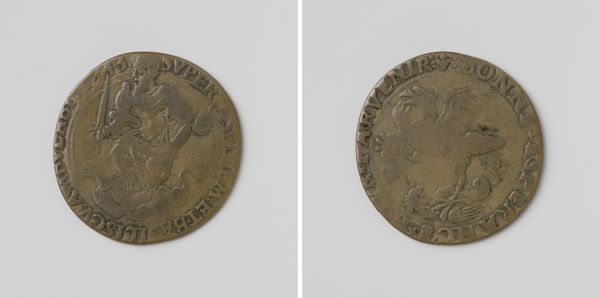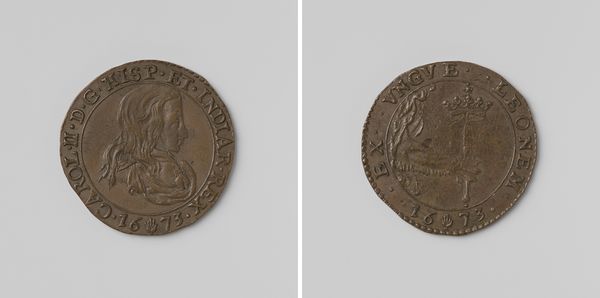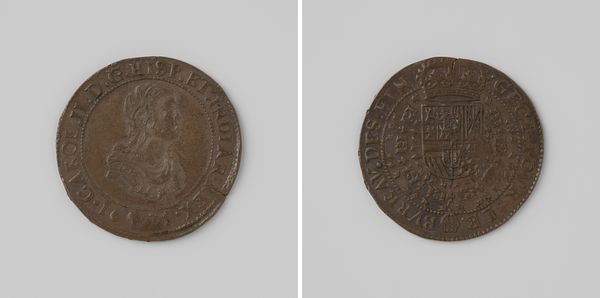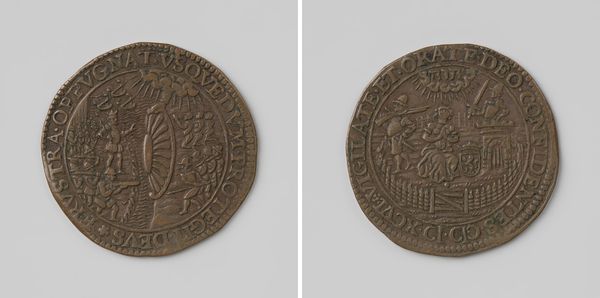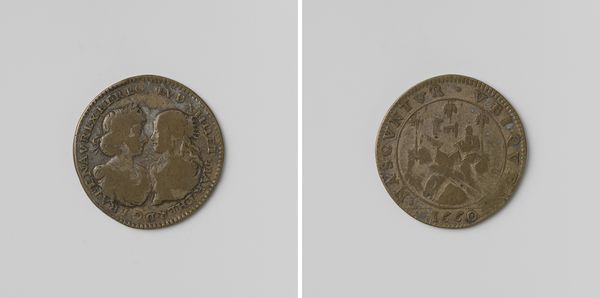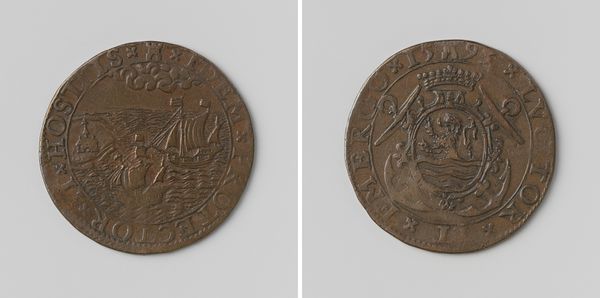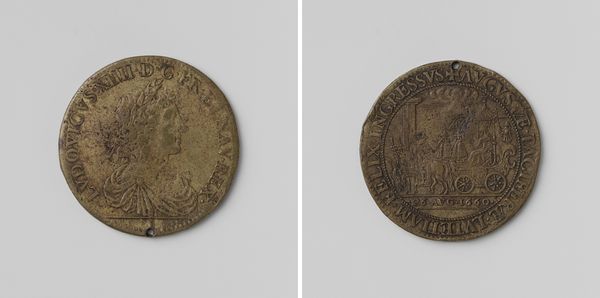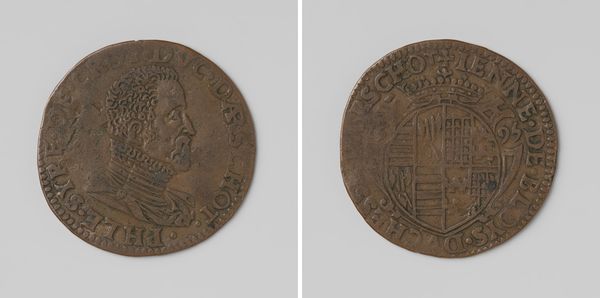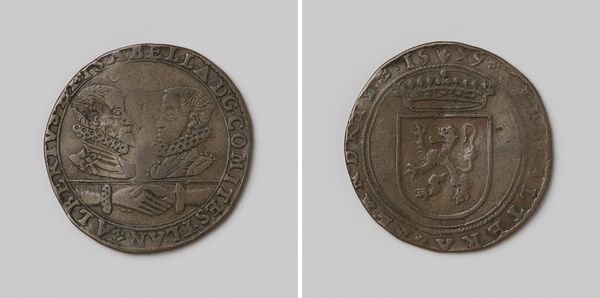
Engels-Franse oorlog, penning van de rekenkamer van Vlaanderen te Rijssel, ter ere van Karel V, Duits keizer 1543 - 1546
0:00
0:00
carving, metal, sculpture
#
portrait
#
medieval
#
carving
#
metal
#
sculpture
#
sculptural image
#
11_renaissance
#
sculpture
#
carved
Dimensions: diameter 2.8 cm, weight 3.93 gr
Copyright: Rijks Museum: Open Domain
Curator: Before us, we have a bronze medal, an “Engels-Franse oorlog, penning van de rekenkamer van Vlaanderen te Rijssel, ter ere van Karel V, Duits keizer,” made anonymously sometime between 1543 and 1546. Editor: It appears remarkably humble, doesn't it? Its diminutive size and simple materiality belie the immense power it signifies. I find myself drawn to the question of how it was made—did a craftsperson carefully forge each one of these, pouring labor into each coin, or was there an early process of minting or mechanical production even then? Curator: An intriguing question. Functionally, medals like these existed in a liminal space between art and currency, meant less for circulation and more for commemorative purposes. Note the inscription carefully circumscribing the primary image: the deliberate rendering of type mirrors the figuration on each face. Editor: And consider that "bronze," how often is that material employed as the neutral backdrop to statements of dominance or heroism? How does this particular medal, through its design and means of production, work to convey political intent or elevate Emperor Charles V? Curator: Absolutely. Let’s break it down formally. On one side, a finely wrought portrait of Charles V. His gaze is direct, his jaw firm, framed by elaborate regal ornamentation. And opposite, we have an allegorical image perhaps depicting the triumph of imperial forces during this Anglo-French war, around what seems to be a triumphal carriage. Editor: Note the possible contrast here in modes of making between "fine art" such as the sculpted profile and a method closer to early industrial practices such as stamping to churn out symbols that broadcast specific intentions. This pushes against notions of what defines “high” art, making one ask, how did practices considered low by the artistic canons become critical in promoting Imperial ideals? Curator: Well put. It's fascinating to consider this object not just as a historical record but as a designed artifact loaded with intentional aesthetic choices. Editor: Precisely. Objects like these give clues as to how power fashioned itself for broader consumption, literally embedding itself in the pockets and hands of its audience.
Comments
No comments
Be the first to comment and join the conversation on the ultimate creative platform.
